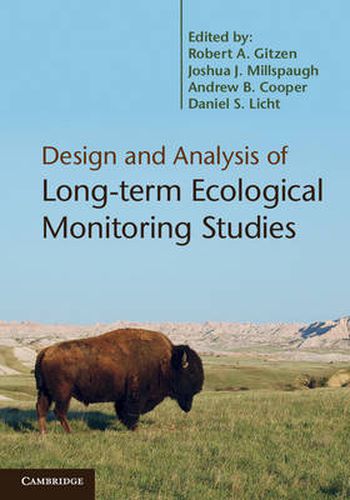Readings Newsletter
Become a Readings Member to make your shopping experience even easier.
Sign in or sign up for free!
You’re not far away from qualifying for FREE standard shipping within Australia
You’ve qualified for FREE standard shipping within Australia
The cart is loading…






To provide useful and meaningful information, long-term ecological programs need to implement solid and efficient statistical approaches for collecting and analyzing data. This volume provides rigorous guidance on quantitative issues in monitoring, with contributions from world experts in the field. These experts have extensive experience in teaching fundamental and advanced ideas and methods to natural resource managers, scientists and students. The chapters present a range of tools and approaches, including detailed coverage of variance component estimation and quantitative selection among alternative designs; spatially balanced sampling; sampling strategies integrating design- and model-based approaches; and advanced analytical approaches such as hierarchical and structural equation modelling. Making these tools more accessible to ecologists and other monitoring practitioners across numerous disciplines, this is a valuable resource for any professional whose work deals with ecological monitoring. Supplementary example software code is available online at www.cambridge.org/9780521191548.
$9.00 standard shipping within Australia
FREE standard shipping within Australia for orders over $100.00
Express & International shipping calculated at checkout
To provide useful and meaningful information, long-term ecological programs need to implement solid and efficient statistical approaches for collecting and analyzing data. This volume provides rigorous guidance on quantitative issues in monitoring, with contributions from world experts in the field. These experts have extensive experience in teaching fundamental and advanced ideas and methods to natural resource managers, scientists and students. The chapters present a range of tools and approaches, including detailed coverage of variance component estimation and quantitative selection among alternative designs; spatially balanced sampling; sampling strategies integrating design- and model-based approaches; and advanced analytical approaches such as hierarchical and structural equation modelling. Making these tools more accessible to ecologists and other monitoring practitioners across numerous disciplines, this is a valuable resource for any professional whose work deals with ecological monitoring. Supplementary example software code is available online at www.cambridge.org/9780521191548.